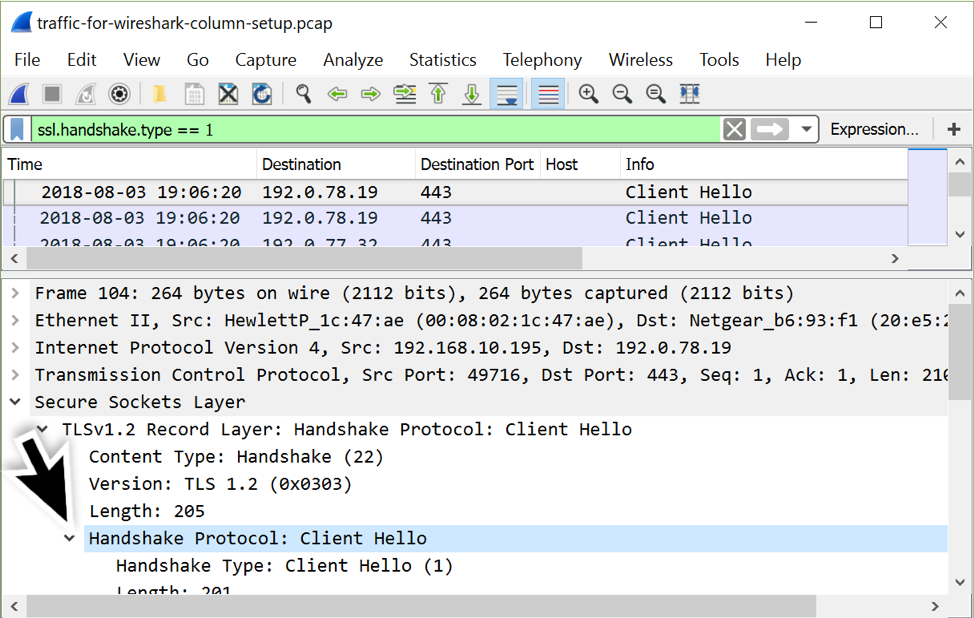
That is: conditional ACEs (use filter "nt.ace.cond"), system resource attribute ACEs (use filter "nt.ace.sra") and scopred policy ID ACEs (use filter "nt.ace.type = 19").Ī complete list of SMB2 display filter fields can be found in the display filter reference Smb2_dac_ A capture containing SMB2/GetInfo and SMB2/SetInfo with examples of Dynamic Access Control specific ACEs. Smb2-peter.pcap Simulated traffic (containing file reads/writes) between a Samba 4.4.x client and server on Arch Linux (from June 2016).
#WIRESHARK DISPLAY FILTER PROTOCOL WINDOWS 10#
Smb-on-windows-10.pcapng Handshake between two workstations running Windows 10 Ifstest.out The log output from the ifstest.exe tool A capture of two Vista beta2 boxes running ifstest.exe (XXX add links to preference settings affecting how DCE/RPC is dissected). The SMB2 dissector is partially functional. XXX - Add example traffic here (as plain text or Wireshark screenshot).

It adds larger types for various fields as well as a fixed size header. SMB2 was introduced with Microsoft Vista and is a redesign of the older SMB protocol.
#WIRESHARK DISPLAY FILTER PROTOCOL WINDOWS 8#
Windows 8 introduced several new features, so Microsoft has decided to bump the revision number up to SMB v3.Īs the packet signature is the same for SMB versions 2 and 3, Wireshark uses the display filter smb2 for both versions. If you only wanted to filter http traffic to and from that host, you could do this: not (host 192.168.5.SMB2 is a new version of the old Windows filesharing protocol SMB and is used for filesharing on modern and future Windows hosts. For example, to keep from capturing http and ssh traffic to/from any host and any packets to or from 192.168.5.22, not host 192.168.5.22 and not port 80 and not port 22 The downside is those packets are not captured if you later want to inspect them and you can't change the filter selected this way during a capture session. It makes the capture take less memory and disk by avoiding capturing packets you're telling it to ignore. While not strictly your question, I prefer to do filtering in the capture filter (double click the interface name in the capture-options dialog), whose syntax is exactly like tcpdump. Tcp.dstport != 80 suffers from a similar problem having tcp.dstport != 80 turns out to mean "match ONLY tcp traffic, but only tcp that is not dstport = 80" Here's a complete example to filter http as well: not ip.addr = 192.168.5.22 and not tcp.dstport = 80 For example, when connecting to 192.168.5.254 from 192.168.5.22, ip.addr != 192.168.5.22 doesn't match *.22 IP, it matches *.254 and thus the packet matches the filter expression.

It might seem more logical to write it as ip.addr != 192.168.5.22, but while that's a valid expression, it will match the other end of the connection as not being the specific ip and still be true. You could also write it like so: not (ip.addr = 192.168.5.22) With the negative match like you have, you need both conditions to be true to filter off your IP, thus and instead of or.


 0 kommentar(er)
0 kommentar(er)
